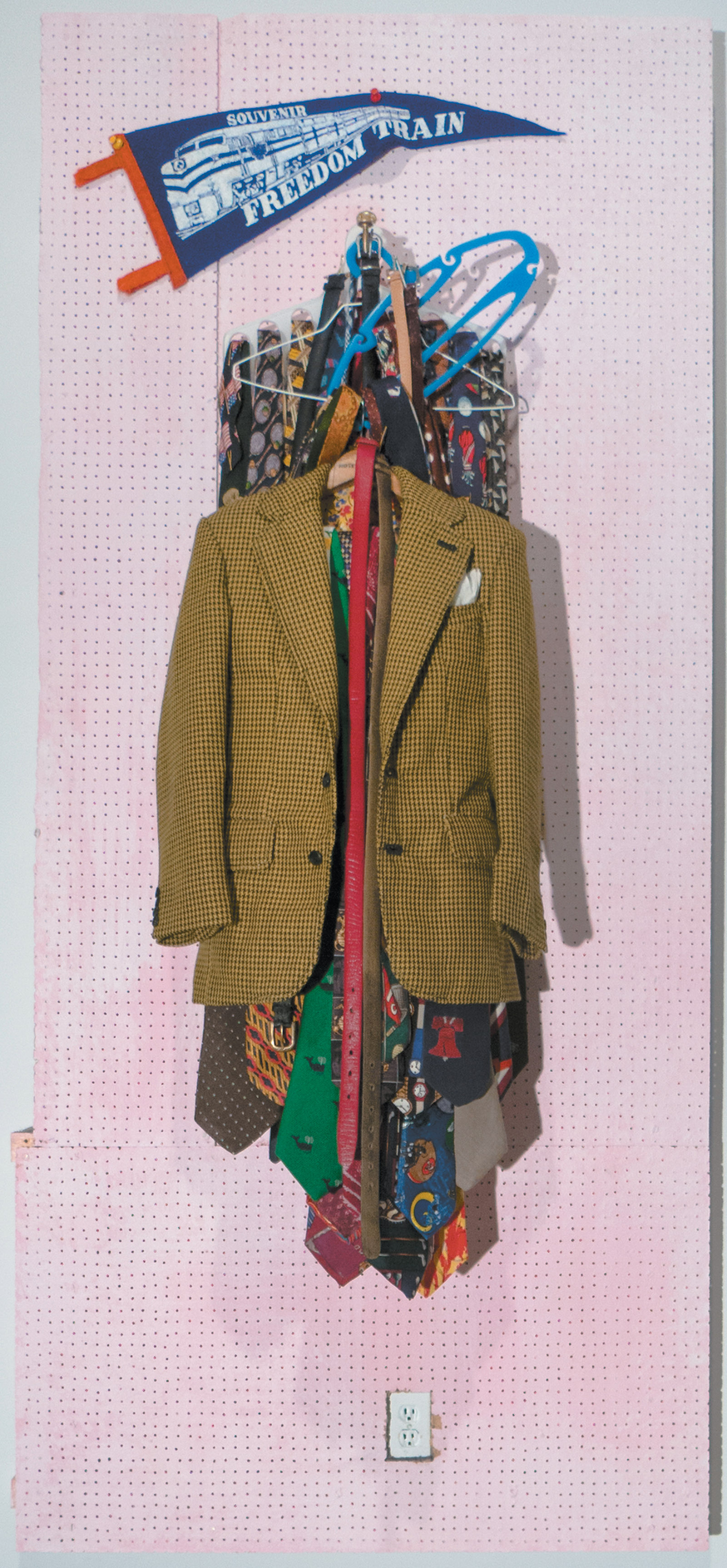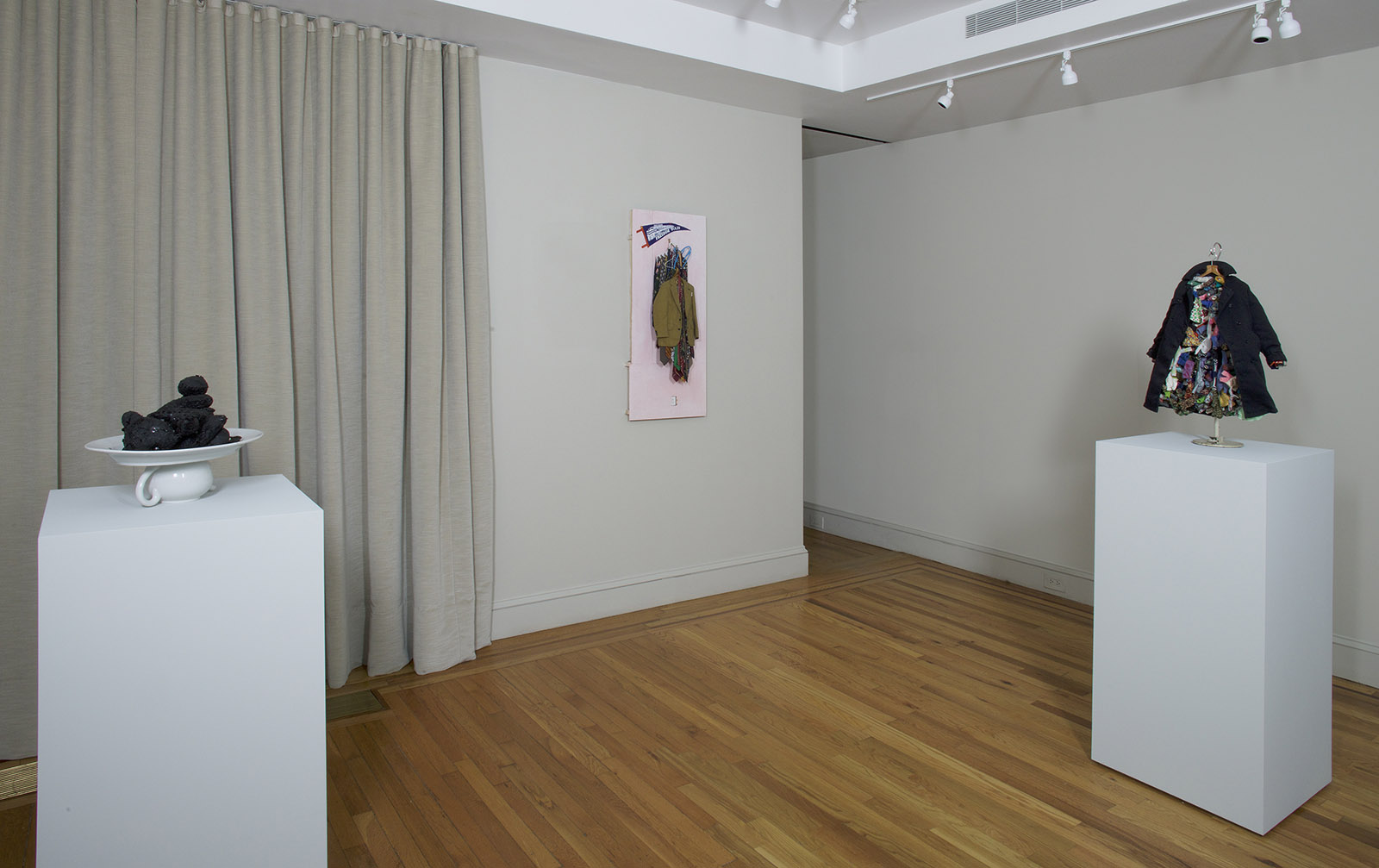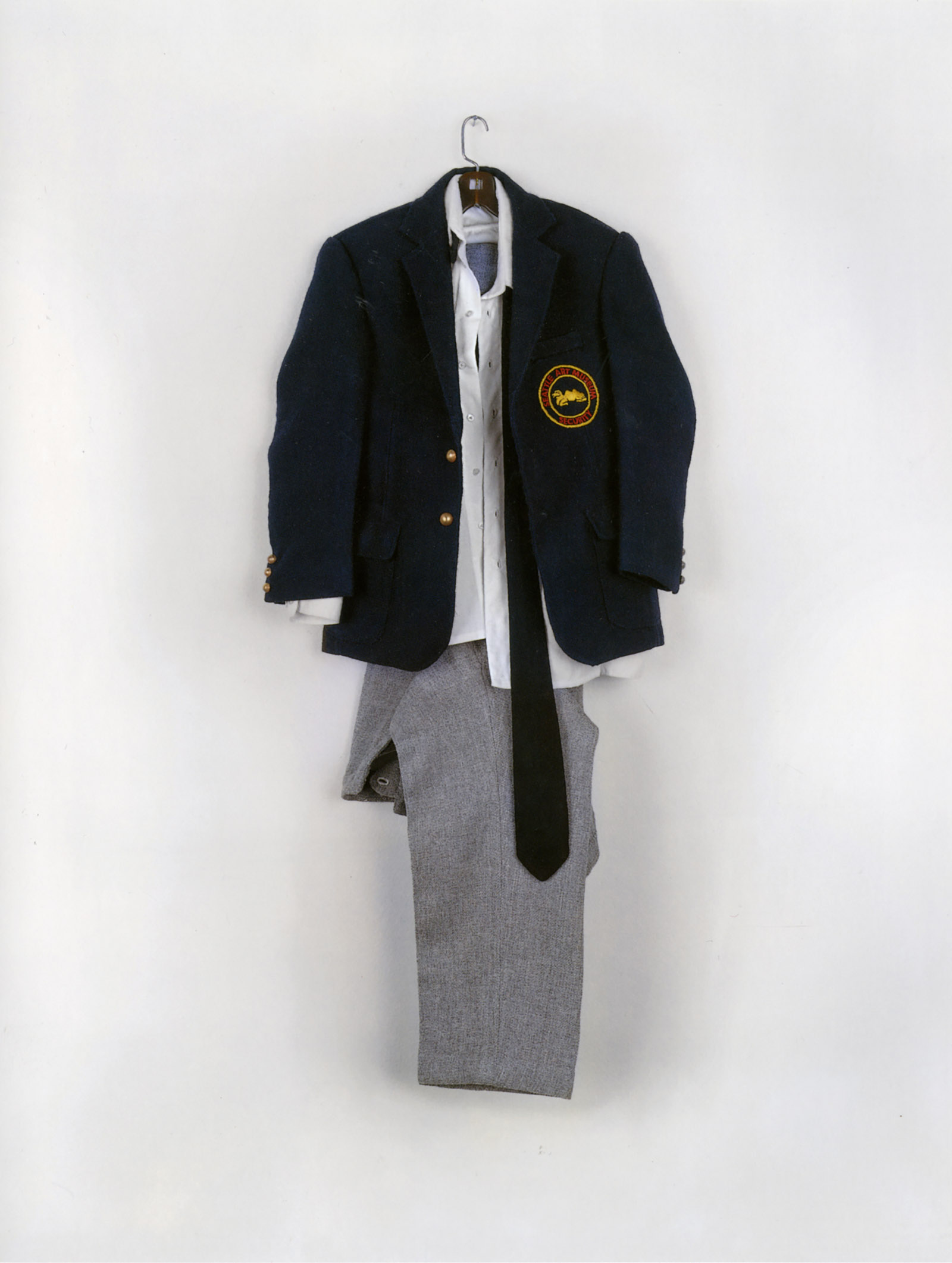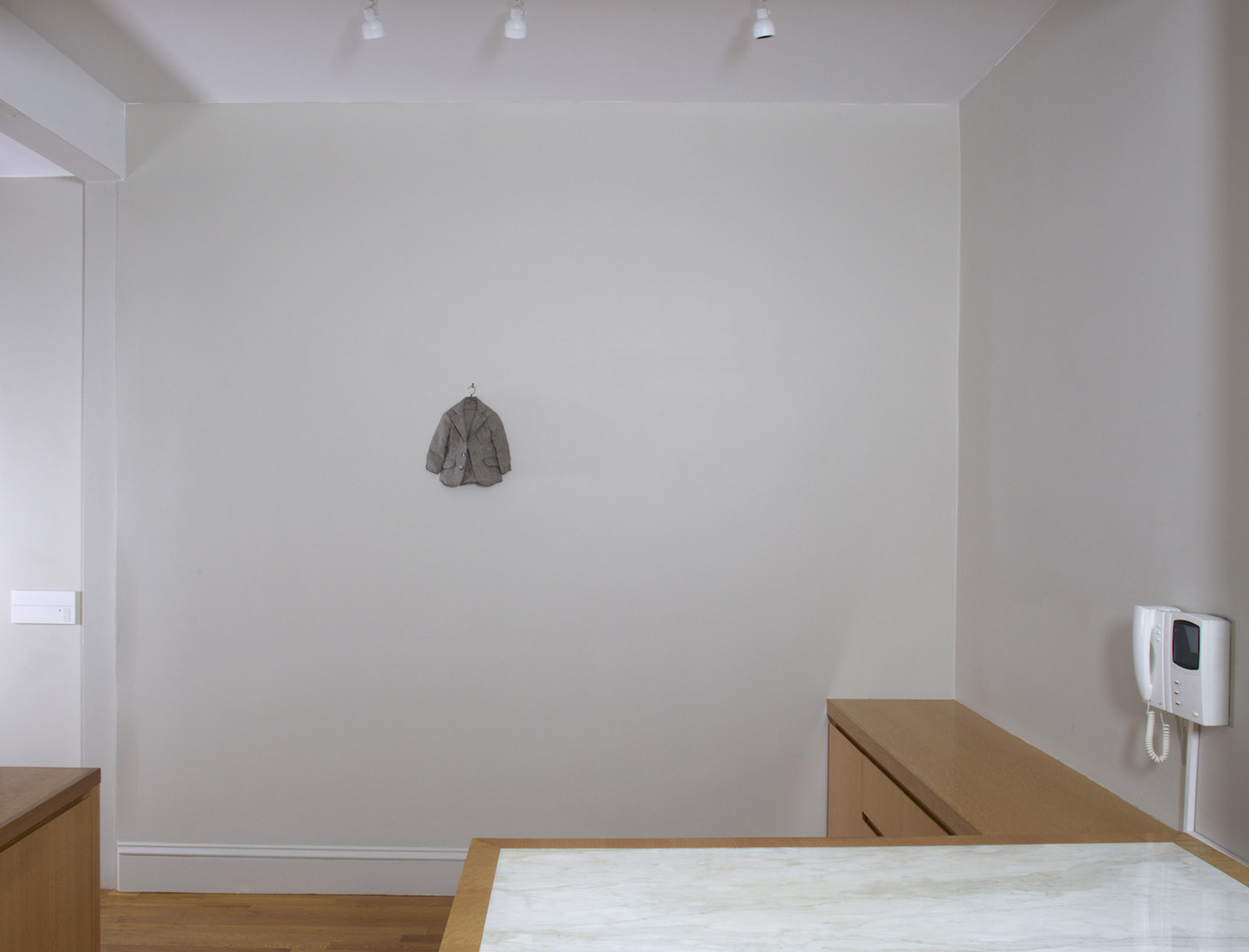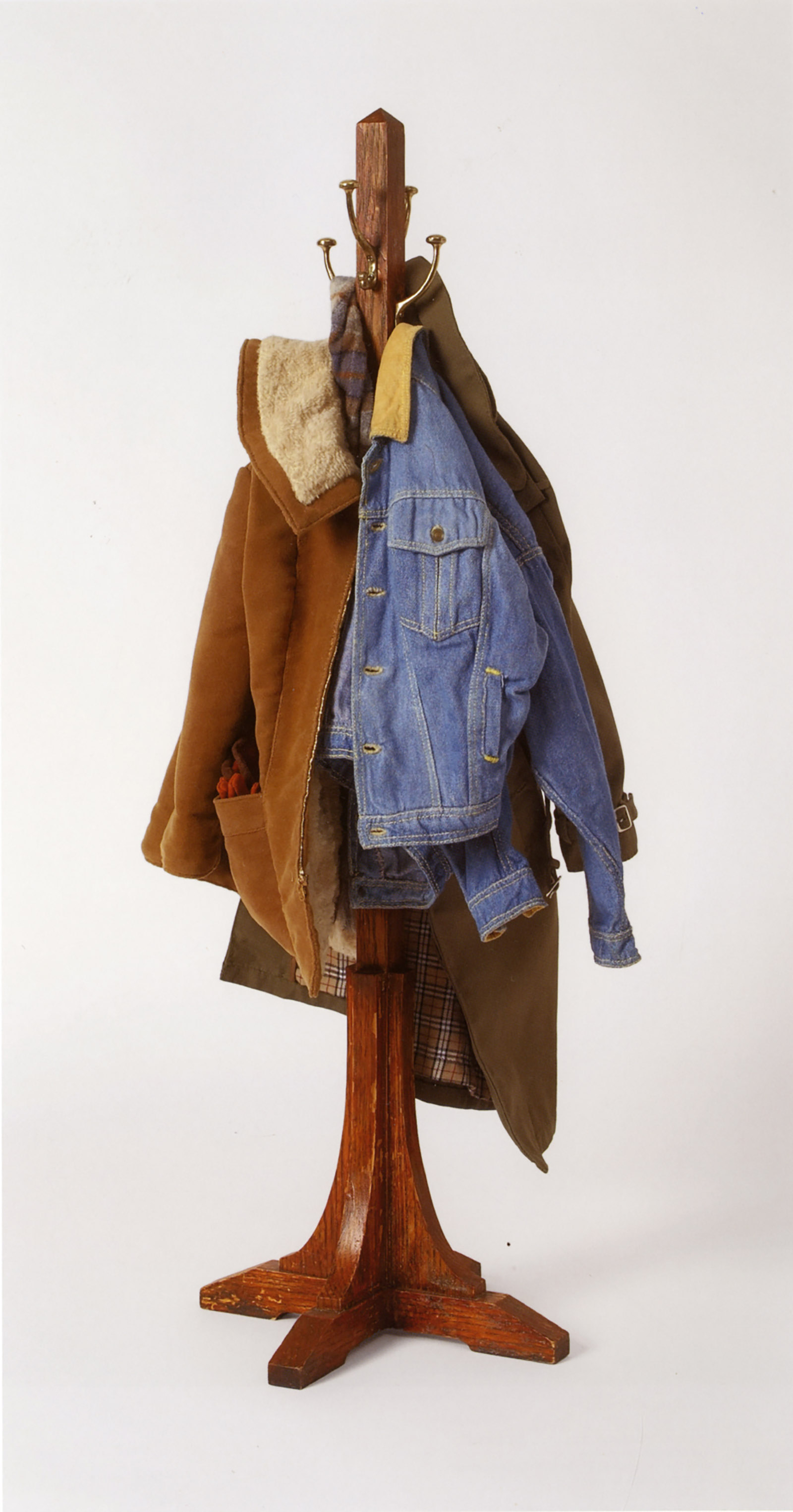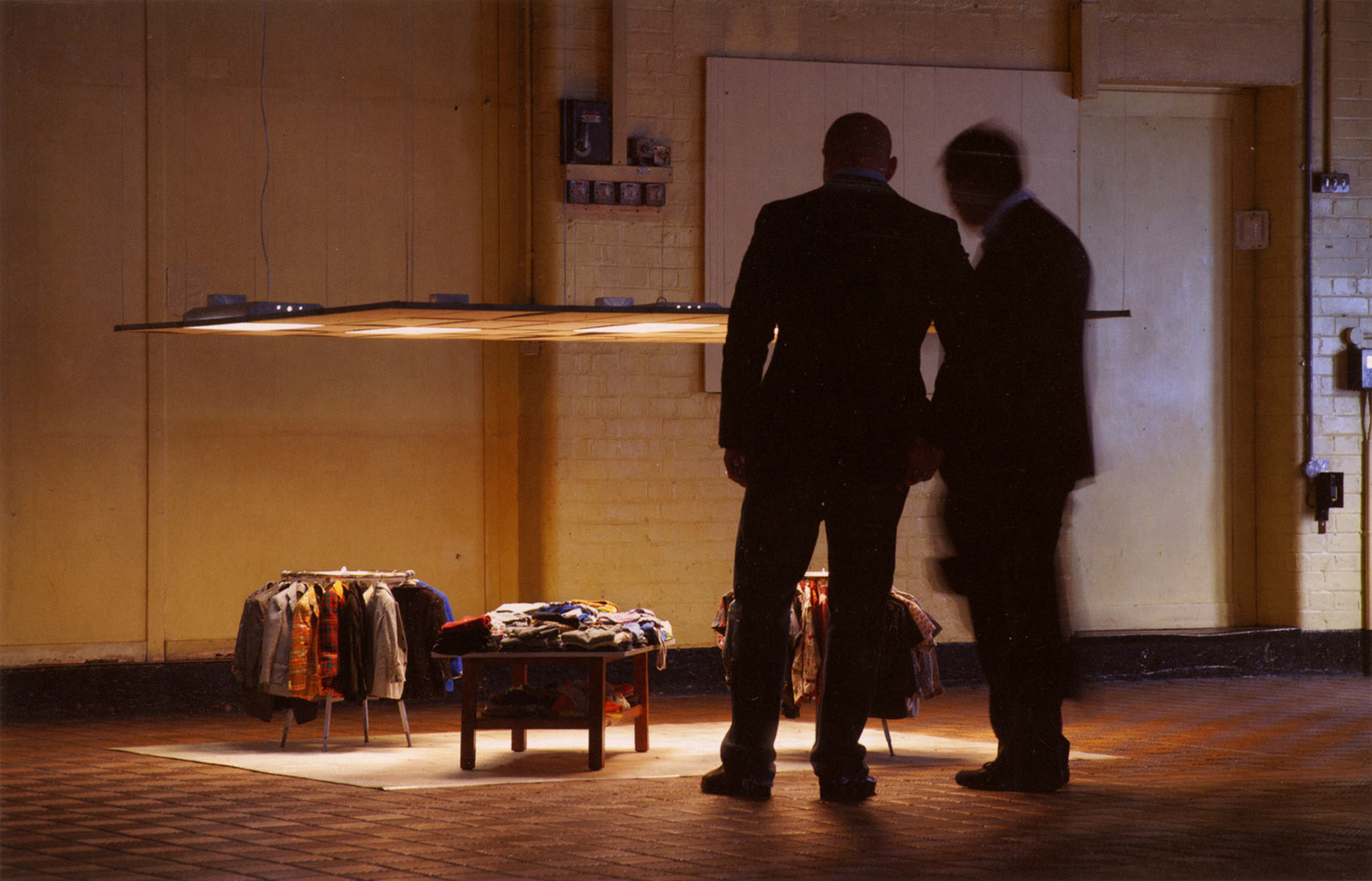For some twenty-five years, Charles LeDray has been surprising and delighting, and sometimes mystifying, the audience for contemporary art. Now fifty-six, LeDray is a kind of realist sculptor whose pieces—in part because his subjects are familiar but not what we would expect in a gallery setting, and in equal measure because he works with such small, essentially miniaturist sizes—have the power of making almost every object he handles seem new to our eyes.
When his art was getting underway, in the late 1980s, he altered the idea we generally have of stuffed animals. Using bears mostly, and sometimes designing them with their limbs askew or separated from their trunks, he gave them the distilled presence of purist, abstract sculpture, and this somehow made their plight seem as much inward and psychological as it was physical. Going on to work as a potter, he has exhibited large vertical glass display cases where on every glass shelf we see scores of neatly placed bowls, pots, jugs, and so on, each about an inch high and each, unbelievably, freshly designed. And as a carver, LeDray has, strangely, used human bone to create phenomenally delicate pieces of household furniture, or buttons of every possible description, or a sheath of wheat.
All these types of works are on view in a well-chosen small show of LeDray’s art at the Craig Starr Gallery in New York. It is the most wide-ranging exhibition the artist has had since his traveling retrospective, which was organized by the Institute of Contemporary Art in Boston and came to the Whitney in 2010. The current show also includes first-rate examples of what is most engaging about LeDray’s art: his sculptures of clothes. He has designed and sewn diminutive blazers, ties, pants, bathrobes, lumber jackets, suits, hats, overcoats, and other items. They can be presented hanging before us on a gallery wall, where they might be called relief sculpture. But they can be shown naturalistically, too, held by the hooks of a little wood clothing pole, or fixed in place by a similarly small mannequin prop. However they face us they often suggest, in pleasingly ambiguous ways, a story, a person, or a larger atmosphere.
Usually between a foot or two feet high, LeDray’s clothes are predominantly men’s apparel. But if there is a larger point to the artist’s concern with what men wear it is not readily discernible. He leaves larger meanings up to us, or as he said in an interview from 2002 about his work in general, “It’s not for me to say what it is or means.” Some of the sculptures appear to be about costumes, or how we dress for work. The 1993 Army, Navy, Air Force, Marines, for example (which is not in the current show), consists, wittily, of four separate outfits, hung one after another on a wall, each a uniform or work clothes associated with one of the armed forces.
The appealing 1994 S.A.M. (which is not in the show either) is also about a job and might be called a self-portrait of the sculptor. The letters stand for Seattle Art Museum, where LeDray, who is from Seattle, worked as a guard. The roughly two-foot-high piece, facing us on the wall, might be a memory of what LeDray saw in his locker there: gray pants on a hanger, draped over by a white shirt, a dark tie, and a blue blazer with a round patch on the outside pocket reading “Seattle Art Museum Security.”
But other sculptures seem to be about clothing itself. This, I think, is the case with an adorable but also enigmatic 1992 work at the show called Becoming/Mister Man. It is a gray, subtly patterned winter suit draped on a wire hanger, itself hanging from a nail hammered into the gallery wall. Measuring fourteen inches high, the piece is guaranteed to make you, at least at first, laugh and grin. We feel we are encountering somebody.
Yet the sculpture’s spirit is elusive. With its smallness, and especially when it is seen in reproduction, it suggests the presence of a little boy. Because the jacket is bulky and pushes out toward the hips, and we imagine the wearer being oblivious of the word “svelte,” we can think we look at a pudgy English schoolboy. But the work itself, seen in a gallery, seems as much symbolical, possibly talismanic—even confrontational. And while LeDray’s point does not seem to entail sexual confusion, the suit’s slightly too big buttons, and the way they have been placed down the jacket’s whole front, make us think of a woman’s suit jacket. Like so many of LeDray’s pieces, this winter garment sends our minds roaming in any number of directions.
Advertisement
LeDray’s tiny carvings of furniture or other items from bone, and his skill in fashioning countless different clay vessels—in some vitrines, each vessel has its own painted decoration—put him in the class of master craftsmen from any age. But when his subject is clothes something funnier, and more novelistic and contemporary, takes over. In these pieces LeDray’s craftsmanship is certainly phenomenal, but it is a kind of skill that allows the viewer to participate with the artist in experiencing how the whole affair has come into being. A good amount of the pleasure LeDray provides comes simply from our knowing that he has made, or had cast, every small thing before out eyes, down to the somewhat old-fashioned wood clothing pole with its hooks, the plastic and wood hangers, and the sometimes visible inside clothing labels.
Freedom Train, from 2013–2015, one of the highlights of the current show, provides a bonanza of customized details to enjoy. It presents an orange check sports jacket (which might be about twenty inches high), along with a waterfall of ties and a few (very appealing) leather belts, hanging from a variety of hangers in the center of a painted pink pegboard “wall.” At the bottom of the wall there is an electrical outlet, and at the top, stuck on with push pins, there is a felt pennant of the Freedom Train—the train that toured the country in the late 1940s and again during the Bicentennial and was full of documents and objects celebrating American accomplishment. LeDray has created everything we see, including the push pins, the pennant, and the outlet, so as to mesh with the size of the sports jacket, which in effect is our protagonist. (The exception, I think, is the ties, which seem too long.)
LeDray initially wanted to be a painter, and Freedom Train, with its lively mixture of colors, has been thought out as a painting. In its centered construction, the piece has the structure, and something of the memorial spirit, of certain classic indirect American painted portraits. It brought to my mind the late-nineteenth-century artist John F. Peto’s portrait-like paintings of various possessions and souvenirs—stained sheet music, a lantern, a dented cornet—hanging off a nicked, old green door. One can think, too, of Marsden Hartley’s Portrait of a German Officer in the Metropolitan Museum, which employs aspects of clothes, set out in a centered way, to evoke a departed person.
Freedom Train uses the seemingly innocuous and everyday subject of clothes hanging on a wall to suggest a larger world. And, as with other artists involved with the very small, which can imply a concern with seeing things at a distance—and with having a distanced sense of people—LeDray’s art is at times almost as much about vastness and multitudinousness as it is about an intimate connection with tiny, singular things. His glass cases full of little pots and bowls convey a sense of sheer abundance as immediately as any sculpture one can think of. Nor is our experience of Village People (2003–2006)—an assembly of twenty-one different hats (hard hat, beanie, Jester’s cap, and so on)—especially cozy, emotionally or physically. The work says, neutrally, that all of us, in our choice of identity, are equally interesting, and when Village People is displayed on a wall it takes up, according to LeDray’s specifications, over seventeen feet of wall space.
The artist’s greatest colonizer of space may be Mens Suits, a piece dated 2006–2009 that was part of the show that came to the Whitney and is undoubtedly a masterpiece. It mixes together a “real” room that we walk around in with, on the floor, a miniaturist’s vision of what might be a cross between a resale shop and a clothing warehouse. Feeling a little like Gulliver, or God, we look down on three different areas where we see jackets hung on metal coat racks and tables full of shirts and ties. Empty hangers are jumbled together, while one neatly holds a row of gloves. There are canvas bins on wheels full of clothes, and here and there a stack of pallets, a ladder, a broom thrown down, and an overturned dolly.
The larger room our resale shop is set in is fairly dark. What lighting there is comes from industrial-type hanging fixtures placed over the zones where the clothes are. The fixtures, which only emit light downward, descend to about four feet from the ground, which means that we viewers often crouch a little to see more fully the illuminated realm on the floor. We bend to marvel at what we would normally not find marvelous, and we are particularly aware of how big we are. LeDray’s piece is a kind of answer to Richard Serra’s overpoweringly monumental torqued ellipse sculptures in steel, which we also tend to experience communally. With Mens Suits, we are the dwarfing ones.
Advertisement
Long after he began showing, LeDray remains an artist who seemingly has far from exhausted the possibilities of diminutive sizes. At the same time, it remains unclear how to bring together the markedly different facets of his art. How, for instance, do we square his purely enjoyable blazers, belts, and bathrobes with the sense of damage and hurt in his early stuffed bears—or with the shiver we feel when looking at his carvings of this and that in human bone? He takes this note far further in a few clothing pieces where the garments have been tattered or have had parts cut out of them. In works where he has taken scissors to his creations and made drastic cuts in them, one feels a deep violation. The vandalism seems random. That may be the point.
LeDray keeps us on our toes, uncertain of what might come next. It may be enough to say for now that he has found an original, and still evolving, way to have us think about smallness and distance, even memory and mortality—and certainly clothes.
This Issue
November 10, 2016
Inside the Sacrifice Zone
Why Be a Parent?
Kierkegaard’s Rebellion


